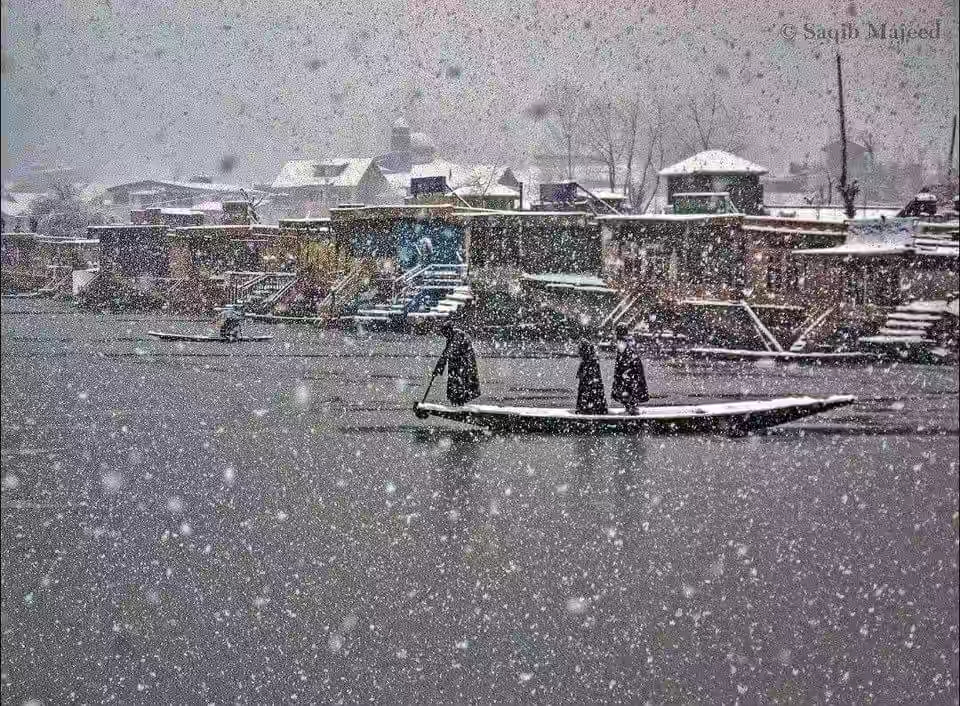Srinagar: As the winter’s core period in Kashmir remained unusually sunny and warm, a forecast by the meteorological department suggests no major wet spell and snowfall in the region this month.
January — the main winter month in the region — is the coldest month in Kashmir with the daily minimum temperature averaging at minus 2.1 degrees Celsius in Srinagar, the state’s summer capital, and minus 7.9 degrees Celsius in Gulmarg, a skiing resort in north Kashmir. The daily maximum temperature has been averaging at 6.3 degrees Celsius in Srinagar and 0.7 degrees Celsius in Gulmarg.
The first fortnight of the month, however, has witnessed the daily maximum temperatures rising several degrees above the average, described as “markedly above normal”, and the forecast suggests no major change in this pattern during the next fortnight.
During the first 10 days of the month, the state had a large deficiency in expected precipitation. The Indian Meteorological Department (IMD) noted that there was 98 per cent deficiency as the state received 0.5 mm rainfall instead of the expected 21.4 mm rainfall from January 1 to 10.
The state’s 18 districts received no precipitation during the first 10 days of the month while two districts received largely deficient downpour, said the IMD weather report.
Kashmir’s tourism industry had pinned hopes on snowfall to revive the stagnant sector while the lack of downpour during the winter’s core period will have a long-term negative impact on water bodies in the region which are already flowing at record low levels.
The precipitation during January, when the weather remains freezing during nights, is of significance as it gets stored in the frozen form and later provides supply to rivers and streams during summer months.
Sonum Lotus, Director of the Srinagar Meteorological Centre, told The Tribune the weather over the next seven to 10 days was likely to remain dry in the region with no forecast of any major wet spell. “There are chances of light snowfall in the higher reaches; otherwise the weather is likely to remain dry,” he said.
The Kashmir valley has so far received one major wet spell when heavy snowfall was recorded across the region in the second week of December. The snow, however, melted quickly as the winter’s core period, which begins on December 21 and lasts till the end of January, was yet to begin and the minimum temperatures were still on the higher side.
The precipitation in Kashmir is mostly caused by the western disturbances, an extratropical storm originating in the Mediterranean region that causes downpour in the north-western parts of the Indian subcontinent.
The few western disturbances that were approaching the Kashmir valley this month weakened midway or changed courses, causing dry weather in the region. The first western disturbance became less effective on January 5 and moved away the next day.
A second western disturbance over the state and its neighbourhood also became less effective last week and a third one is likely to pass over the state this week with no significant change in the pattern.
Poor rainfall
The first fortnight of January has witnessed the daily maximum temperatures rising several degrees above the average. A Met forecast says no major change in this pattern is expected during the next fortnight.
During the first 10 days of the month, the state saw 98 % deficiency in the expected precipitation. It received 0.5 mm rainfall instead of the expected 21.4 mm rainfall.
The state’s 18 districts received no precipitation during the first 10 days of the month while two districts received largely deficient downpour, said the IMD weather report.
Reported The Tribune

